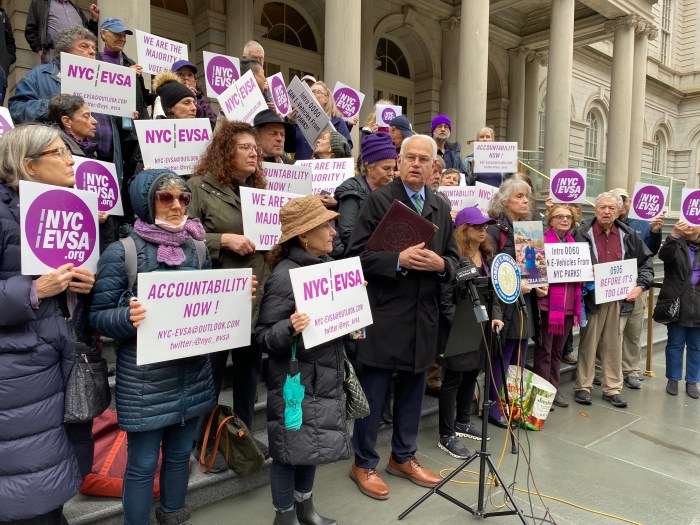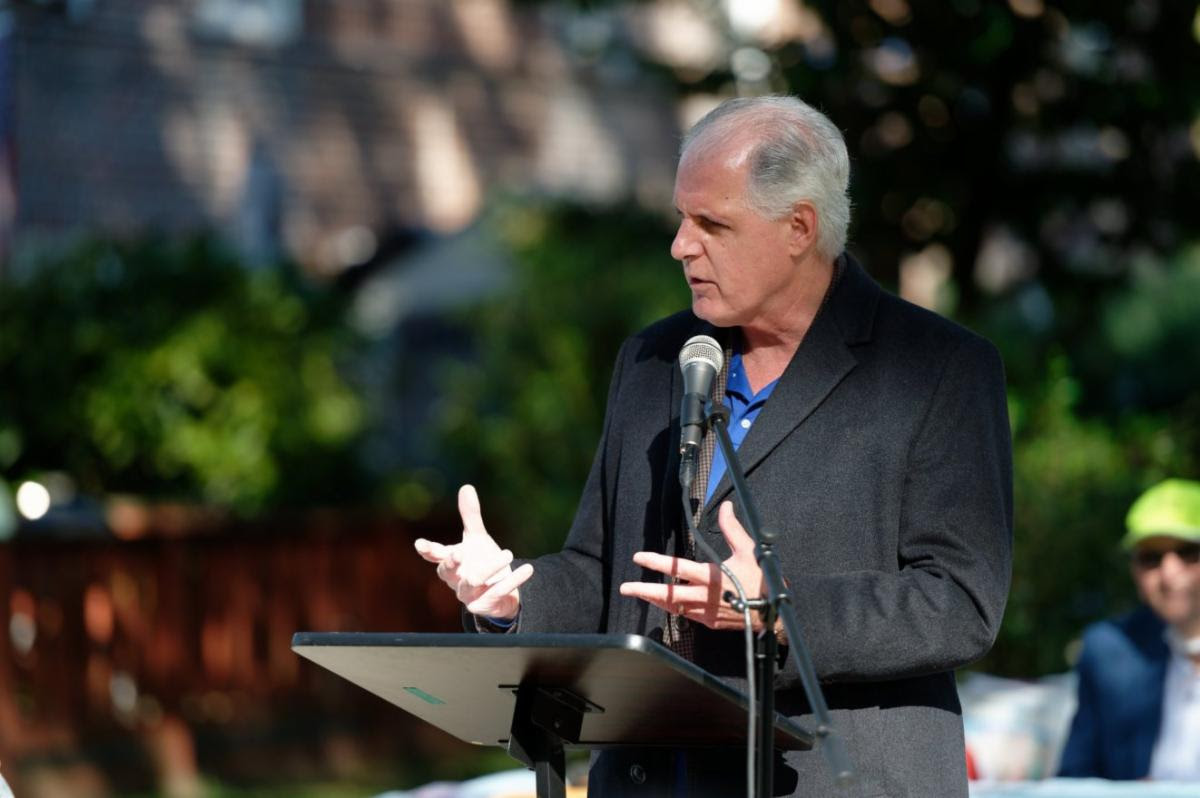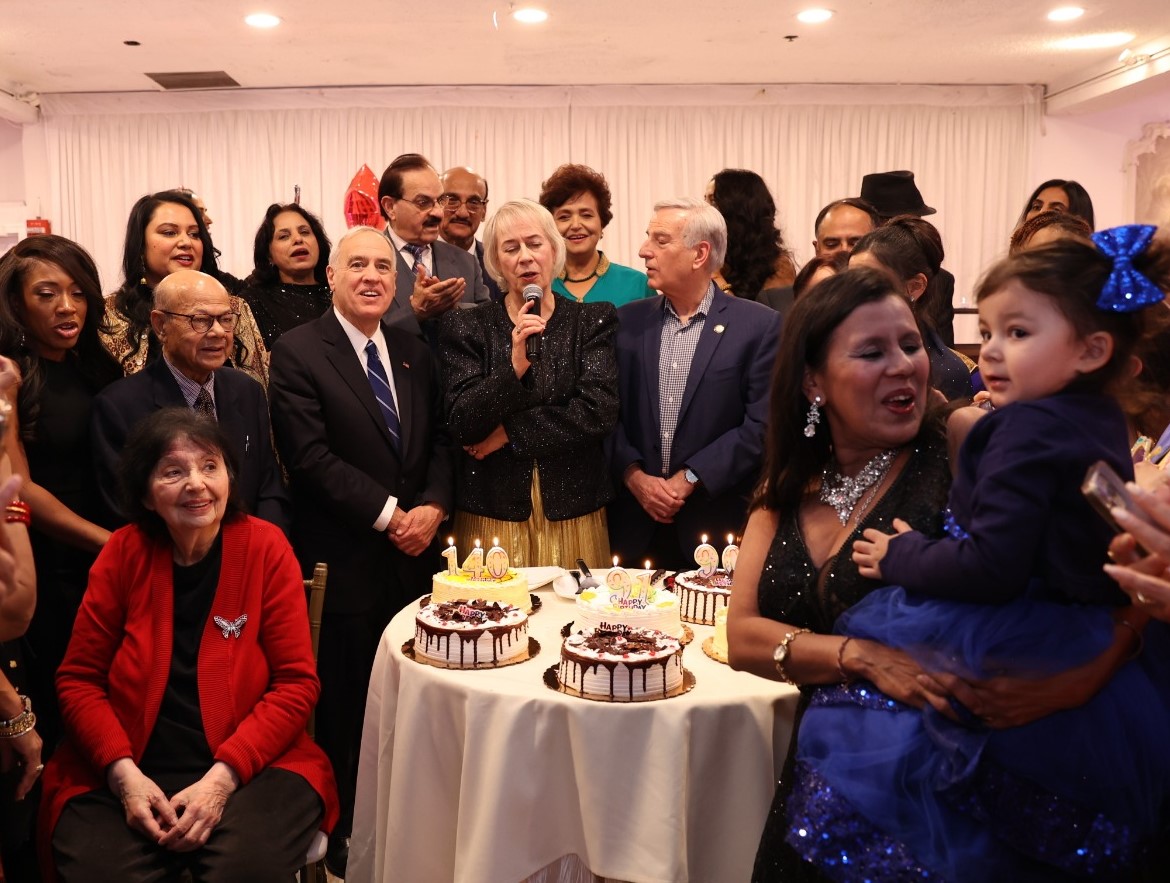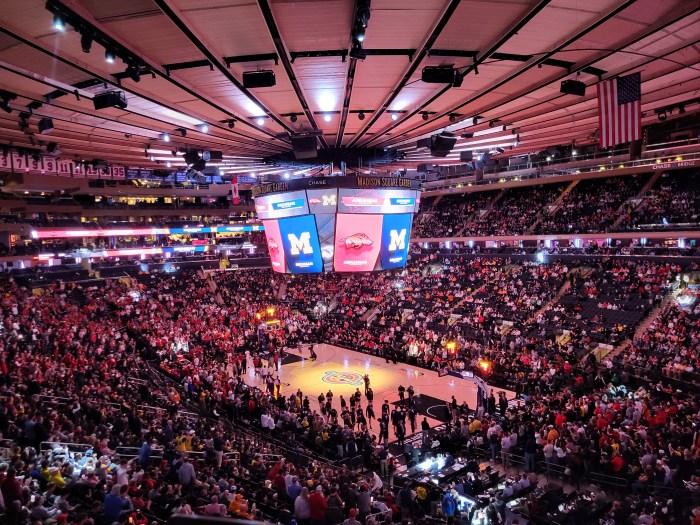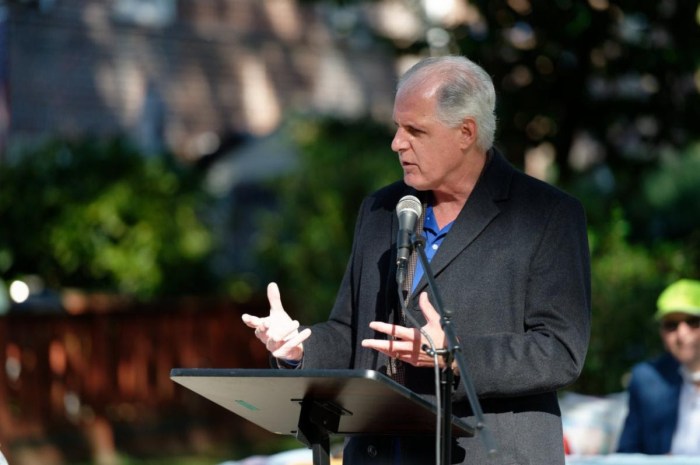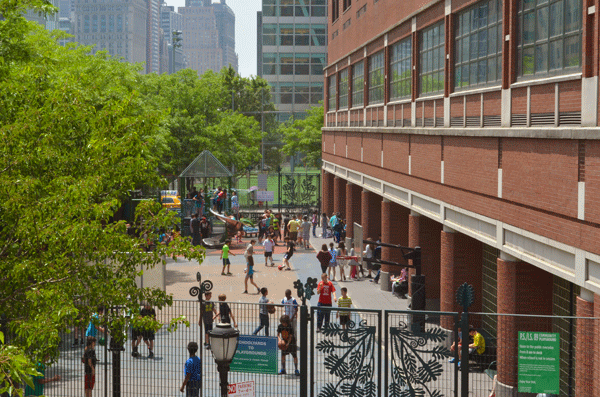
BY JOSH ROGERS | And then there were none.
Lower Manhattan principals said Friday that their waiting lists have dropped to zero, meaning 5-year-olds without kindergarten seats are receiving offers to nearby schools this week.
“I’m very happy — can’t you tell, I’m actually smiling,” said Ariana Massouh, a waitlisted parent who started a change.org petition pressing the Dept. of Education to find space for the 148 children who were originally waiting for kindergarten seats Downtown.
Massouh’s daughter, now in pre-K at P.S. 276, will be able to stay in Battery Park City and attend P.S. 89.
All students on the P.S. 276 list are expected to be offered a seat at P.S. 89. The three students on the Peck Slip School list will get offers at nearby Spruce Street School. Students on the P.S. 234 list will receive offers to attend school two blocks away at P.S. 150 in Tribeca.
The Dept. of Education has proposed moving P.S. 150 to Chelsea in 2014, but officials now appear less gung-ho about making the move, which is not yet final. The topic was barely addressed at the June 14 meeting of Assembly Speaker Sheldon Silver’s School Overcrowding Task Force.
Immediately after the meeting, Ben Goodman, the director of the D.O.E.’s Manhattan office of public affairs, acknowledged that waitlisted P.S. 234 parents being sent to P.S. 150 could end up being sent to Chelsea in a year, but he also told Downtown Express it was only “if [P.S. 150] does move. We’re still reviewing that.”
Community Board 1 has asked the Dept. of Education to keep P.S. 150 somewhere in Lower Manhattan.
The city also appears to be considering expanding the space at P.S. 150, which is part of the Independence Plaza North housing complex.
“Some of the conversation has been around construction in that building, so we want to sort of not share out too many details before the situation is finalized,” said Carrie Marlin of the D.O.E.’s Office of Portfolio Planning.
After the meeting, some were skeptical the city would be able to pursue a P.S. 150 expansion, and Wendy Chapman, the school’s P.T.A. leader, said she doubted whether it was feasible.
P.S. 150 will have two kindergarten classes next year, giving up a room shared for occupational therapy, reading specialists and the school psychologist.
P.S. 89 will be taking two extra kindergarten classes for a total of five. One will be from the school’s own waiting list and the other from P.S. 276. Education officials said the school would be able to sustain the extra classes for one grade, and Principal Ronnie Najjar agreed.
P.S. 89’s parent coordinator, Connie Schraft, told Downtown Express that one of the new kindergarten rooms had been loaned to I.S. 289, which shares the building, and the other was available because the school this year only had two third grade classes, instead of three.
The city expects the school’s five kindergarten classes to go down to four or three sometime after first grade due to natural “attrition.”
To help clear the P.S. 276 waiting list, it is enrolling 29 students per kindergarten class, rather than 25, in the hopes enough children will either move away this summer or enroll in a gifted and talented program.
The Education Dept.’s Jennifer Peng said the decision to add students to kindergarten classes came as a result of consultations with the principals who are staying in touch with families to see if anyone is unlikely to enroll. Terri Ruyter, P.S. 276’s principal, said she was “moderately comfortable” with adding seats.
Children who do not get spots in their zoned school maintain the “right to return” if space opens up there in subsequent grades.
Tammy Meltzer, a member of the overcrowding task force and Community Board 1, said it was a “great accomplishment” to clear this year’s lists, but “I’d just hate to say ‘great we’ve solved the problem,’ and everybody walk out feeling so fabulous,” without beginning to work out the pending problems.
“It would be nice to have a plan looking forward and to start that plan and get some assurances by the time the year ends,” she said.
Paul Goldstein, Silver’s aide, said “now is the time to start scouting and surveying and looking around” for temporary and permanent school sites. He pointed out that the Lower Manhattan community has identified and fought for every elementary school from P.S. 234 decades ago to Spruce, P.S. 276 and Peck Slip more recently.
D.O.E. officials, two days prior, had told Silver, Goldstein and some of the school advocates that they believed the southern part of District 2 needed 1,000 additional school seats, and they planned to include that in the five-year capital plan this November, a development first reported by downtownexpress.com last week along with the end of the waiting lists.
If a school site is found, the city would probably try and set up temporary “incubator” space before the new one opened, perhaps as soon as Sept. 2014.
One possible incubator site is D.O.E. headquarters at Tweed Courthouse, now hosting Peck Slip. Maggie Sienna, though, said dividing the classrooms at Tweed will not work, particularly since some of the students are in special education and sensitive to noisy distractions.
“I am very reluctant to put 50 children in one of those rooms that can’t be divided with an auditory division,” she said.
The D.O.E.’s Marlin said the city is taking a look at adding classroom space on the first floor, a suggestion first made by the Downtown advocates a few years ago.
Councilmember Margaret Chin said the city is also surveying 22 Reade St., a city-owned building to be vacated, as a possible school site.
Technically, the 1,000 seats, likely two schools, could be placed as far north as the West Village, but given it comes as a result of residential construction primarily south of Canal St., and the fact that the D.O.E. announcement came after being presented with population analyses done by Community Board 1 and parent advocates, it is far more likely that the new schools would be further Downtown.
“We’ve been given subliminal assurances at the meeting that C.B. 1 would be receiving those 1,000 seats,” said Paul Hovitz, a Board 1 member who attended the June 12 meeting to discuss the need for more schools.
“We hear you loud and clear as to what your position is,” Goodman said in response.
The D.O.E. has not yet directly confirmed the 1,000 seat assessment, but Devon Puglia, an agency spokesperson, said last week that “We are working closely with this community to address the growth in elementary students and to look to the future.”
Silver called it a “great victory” and added in a prepared statement that “I am thrilled that all of the hard work we are doing on my School Overcrowding Task Force has once again resulted in a plan for new schools in our Lower Manhattan community.”
Schools Chancellor Dennis Walcott had given Silver and Downtown school advocates hope two months ago when he said he wanted his school planners to take a “deeper dive” into the “pockets” of Lower Manhattan that have had unparalleled population growth.
Some of the advocates were disappointed at the next followup meeting in which education officials backed off from Walcott’s words and said the city would continue to analyze school needs along broader geographic lines.
Eric Greenleaf, one of the advocates and an N.Y.U. professor who has closely analyzed Downtown birth rates and school needs, estimates that Lower Manhattan needs another 1,200 seats. This is the first time since he has been doing this analysis that the D.O.E.’s estimates comes close to matching his own.
The D.O.E.’s estimates in recent years have not been accurate. P.S. 234 for example, has had waiting lists five years in a row.



